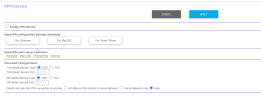I seem to remember that back in the early days of the customised firmware that I was able to use an HTTPS connection for access to the web interface.
I would like to access some of my boxes via the Internet using HTTPS but selecting Web Interface Settings
from settings no longer works. When you change the setting it seems to go away and do something in the background but rebooting doesn't seem to change anything.
Is this something that should work or could be re-introduced?
I have no knowledge of how an encrypted connection is implemented and I can't find any idiots guide to what's involved. What I have read talks of certificates, private and public keys, SSL/TLS all of which are foreign to me.
Anyone know if it's possible and what would be involved.
I would like to access some of my boxes via the Internet using HTTPS but selecting Web Interface Settings
| HTTPS web server? | Yes |
|---|
Is this something that should work or could be re-introduced?
I have no knowledge of how an encrypted connection is implemented and I can't find any idiots guide to what's involved. What I have read talks of certificates, private and public keys, SSL/TLS all of which are foreign to me.
Anyone know if it's possible and what would be involved.


